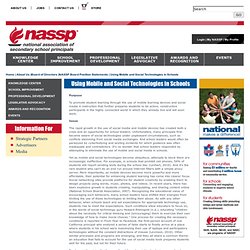

Don’t, Don’t, Don’t vs. Do, Do, Do. Recently, I presented at a school on an opening day for teachers where the first thing that greeted everyone on the table in the lobby was an 8-page Acceptable Use Policy which staff members were picking up as they filed into the school.

I picked one up too, and when I had a moment I started paging through it, looking at all the ways in which students (and teachers) could get themselves in trouble on the school network. The middle three pages were filled with an A-Y double spaced list (guess they were saving room for one more rule next year) which spelled out the many transgressions that were not going to be tolerated, things like people shouldn’t be harassing one another, going around the filter, accessing shopping sites, accessing any sites that were “social in nature” and, the big one, downloading software to school computers for personal use. And much, much more. But the other part that struck me was what this policy said about the curriculum in that district.
Etc. From Banning to BYOD. In your schools, In your classrooms, you will soon allow students to use computing devices they already own.

While today 99 percent of schools ban cell phones and other mobile devices from the classroom, there will be a 180-degree turnaround within four years. This coming shift is inevitable. Why? Because banning will no longer be practical. Each and every student will have at least one mobile computing device (e.g., smartphone, media player) with them at all times. Using Mobile and Social Technologies in Schools. Purpose To promote student learning through the use of mobile learning devices and social media in instruction that further prepares students to be active, constructive participants in the highly connected world in which they already live and will soon work.

Issue. BYOD (Bring Your Own Device) Toolbox.